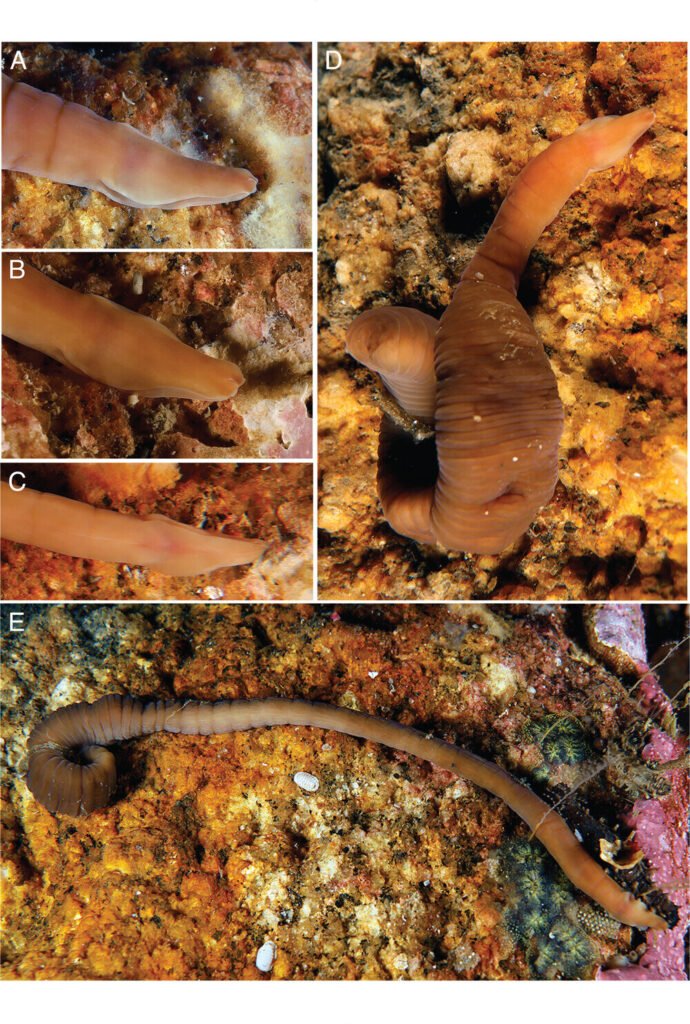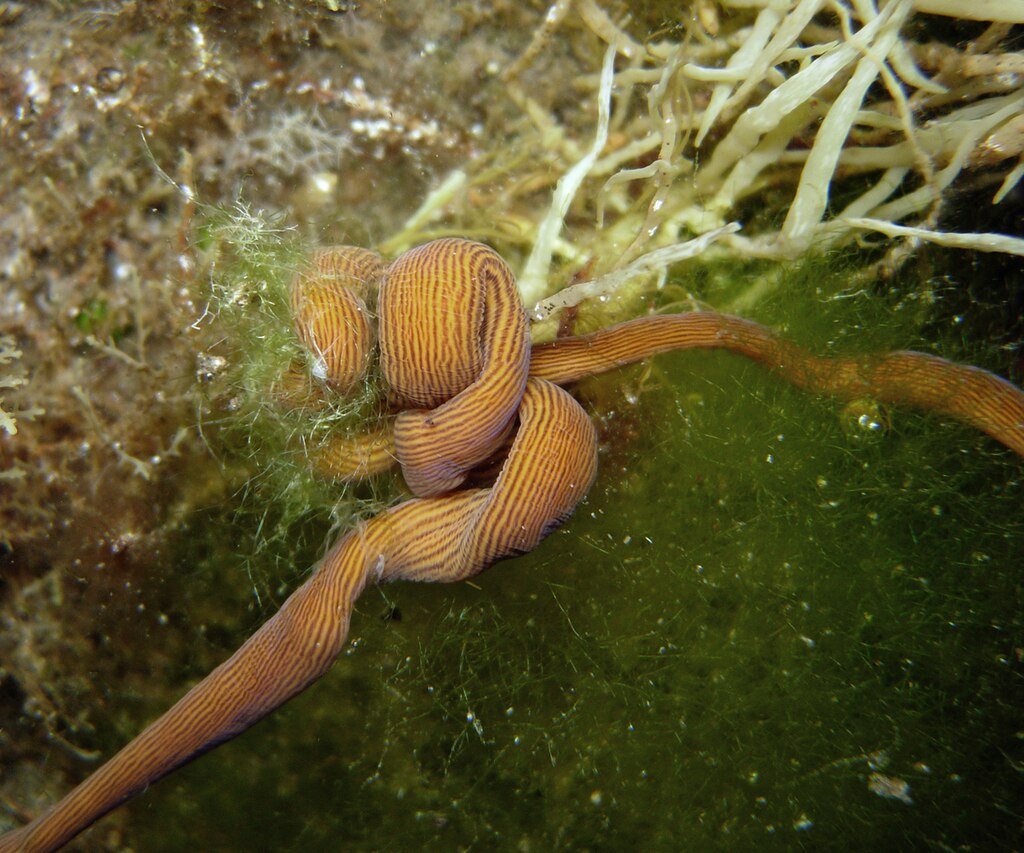A previously unknown species of ribbon worm, Pararosa vigarae, has been discovered off the northwest coast of Spain. The marine worm, nicknamed the accordion worm, can shrink to one-fifth of its size when alarmed, forming distinct ring-like folds along its body. Scientists believe this unique contraction ability may serve as a defensive mechanism or aid in movement.
How the Accordion Worm Was Identified

The species was first spotted during sport dives in Ría de Arosa, Spain, leading researchers to collect specimens from 30-meter depths beneath rocks and shells. To classify the worm, scientists combined visible traits with DNA analysis, overcoming past challenges in ribbon worm taxonomy. Genetic sequencing confirmed that Pararosa vigarae belongs to the Lineidae family within the phylum Nemertea.
Why Ribbon Worms Are Difficult to Classify

Ribbon worms have few external features, making traditional classification methods unreliable. Researchers previously relied on internal anatomy, but this approach proved tedious and complex. The discovery of Pararosa vigarae highlights the importance of combining molecular and morphological data to accelerate the identification of new species.
Ecological Role and Future Research
Like other ribbon worms, Pararosa vigarae is a predatory species, using venom to immobilize prey. Scientists aim to study its feeding behavior, habitat preferences, and potential ecological impact. The discovery also raises questions about how many more unidentified ribbon worms exist in marine ecosystems.
Conclusion
The identification of Pararosa vigarae expands our knowledge of marine biodiversity, emphasizing the need for advanced classification techniques. As researchers continue to explore the ocean’s depths, discoveries like the accordion worm remind us that many species remain hidden beneath the waves.
Source





